How to create an AutoApi
Step-by-Step Guide
Step 1: Go to the screen to create the AutoAPI.
Navigate to the AutoAPI section in your Orchestrator toolbar.
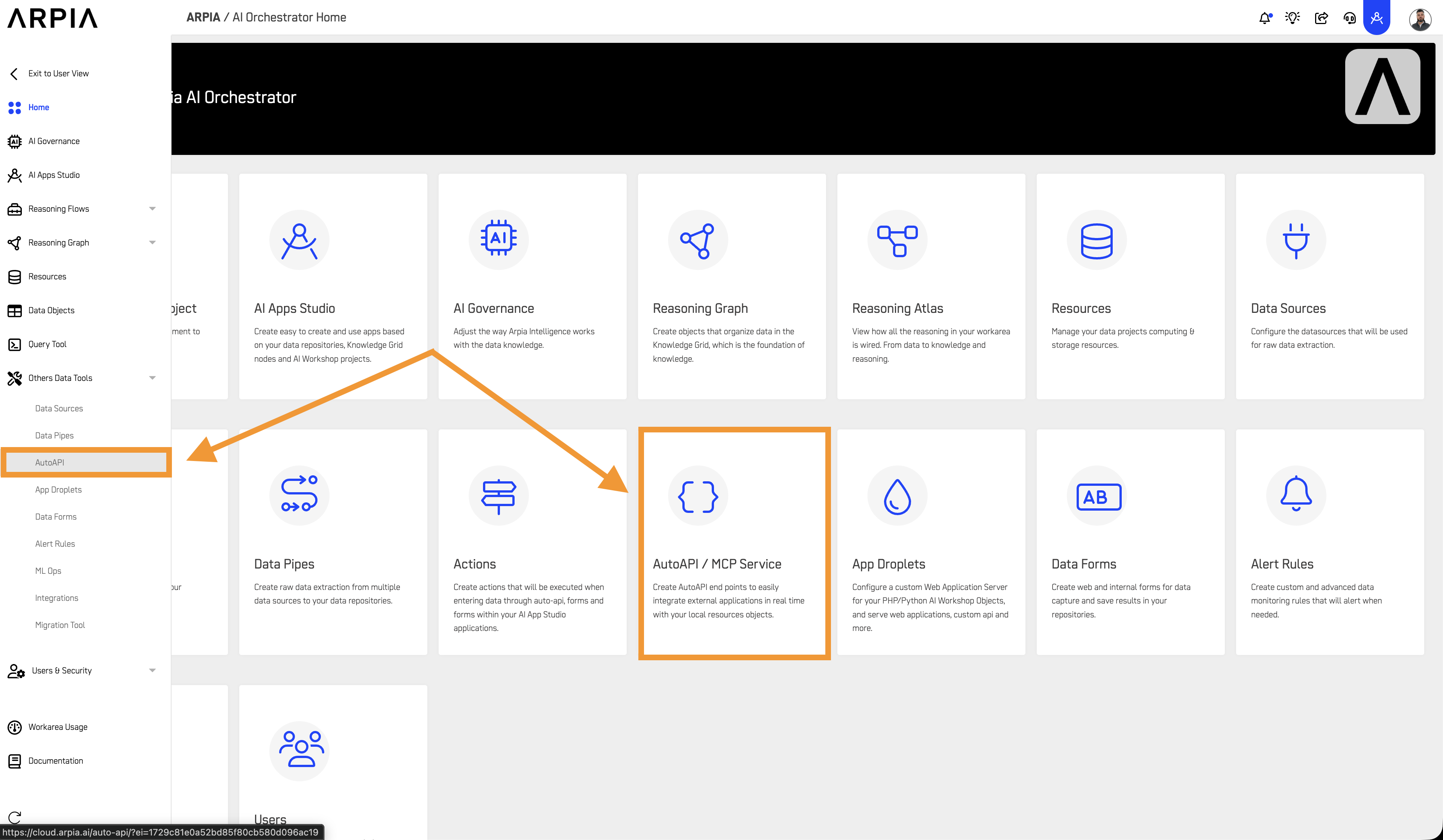
Step 2: Create the AutoAPI.
You will be directed to a new window displaying all the AutoAPI you have created. To create a new AutoAPI, click the + button.
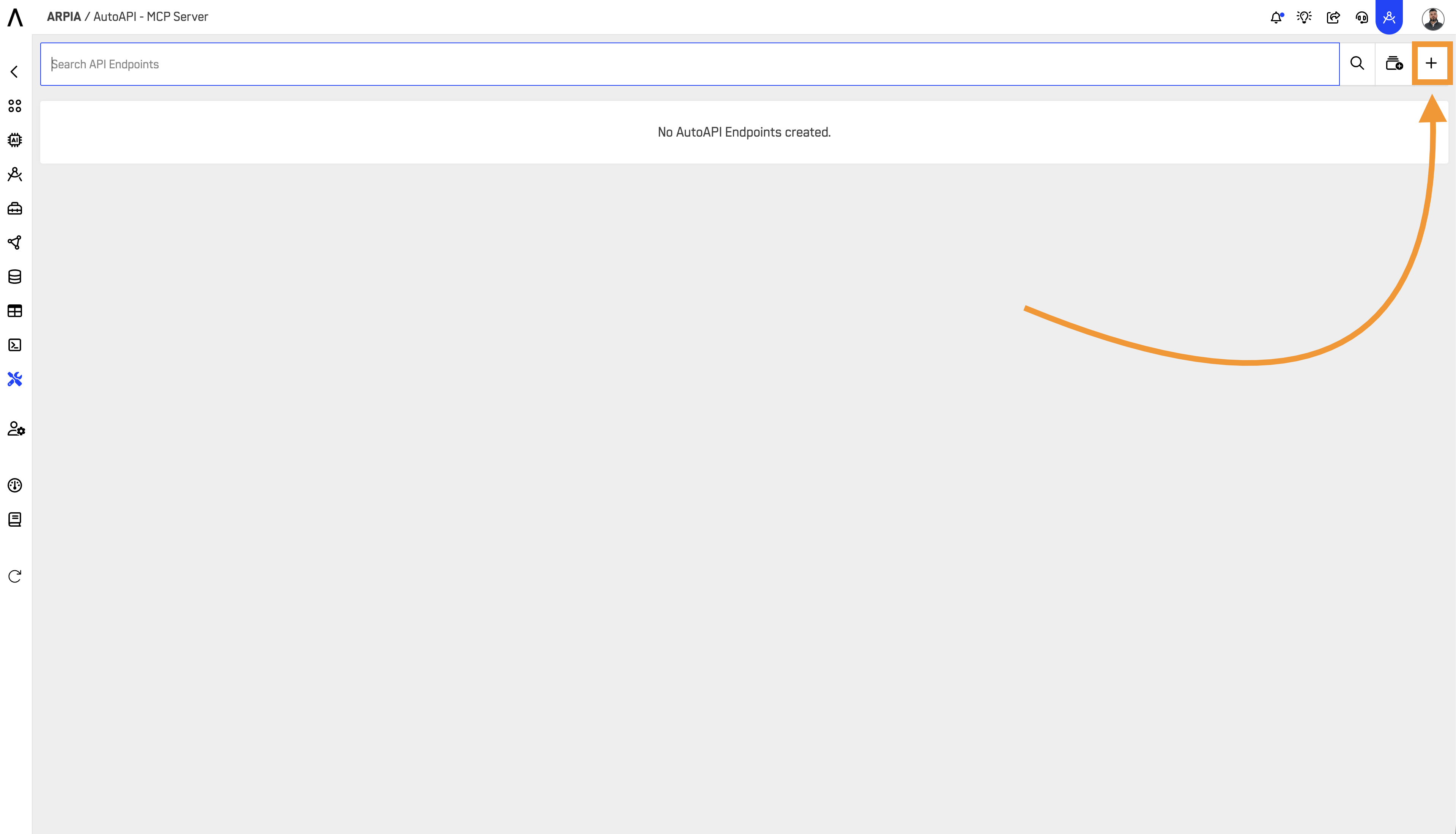
Step 3: Fill the Create AutoAPI Endpoint Form
Add the necessary information for your AutoAPI and select a method (Endpoint).
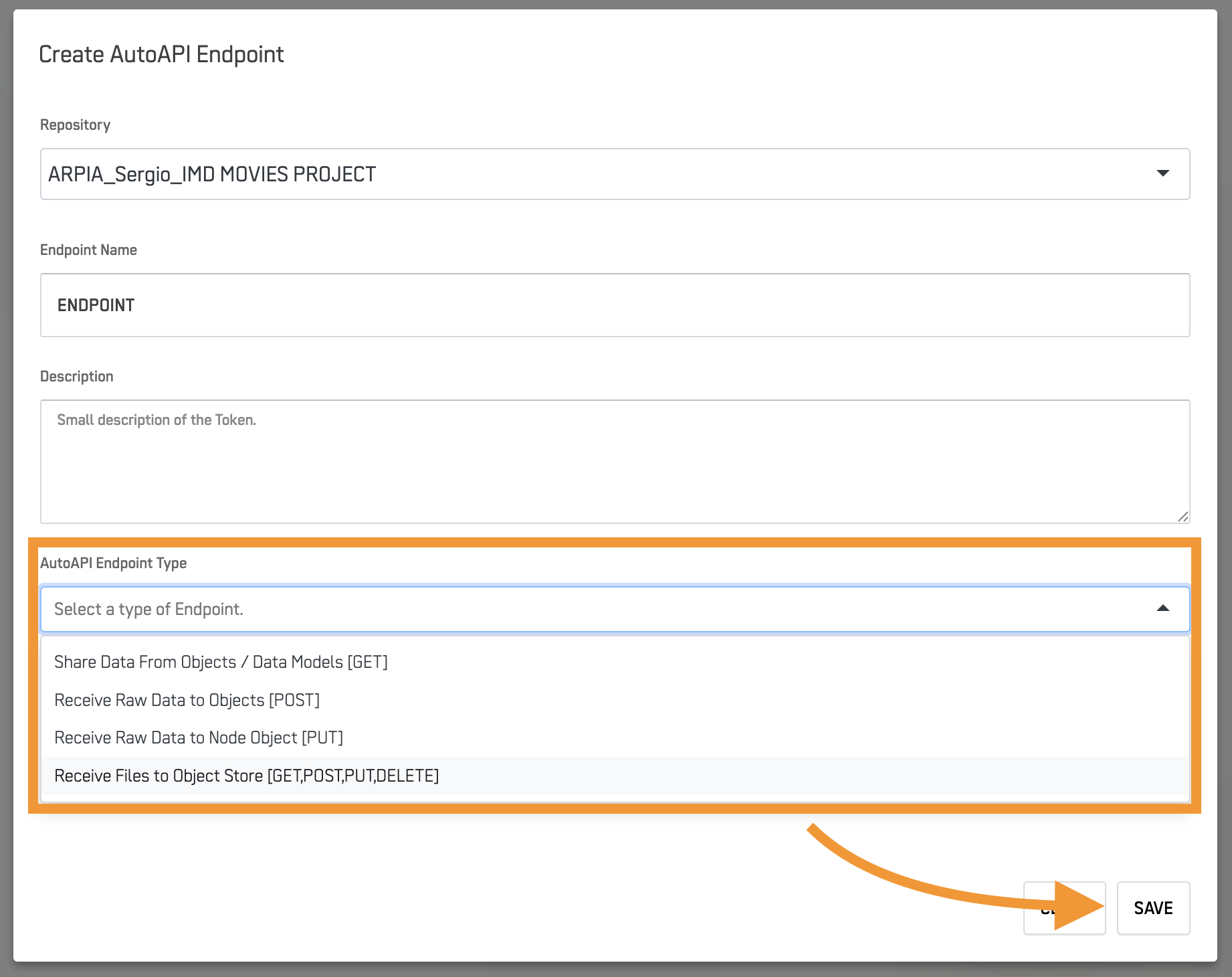
Step 3.1: From the pop screen press OK.
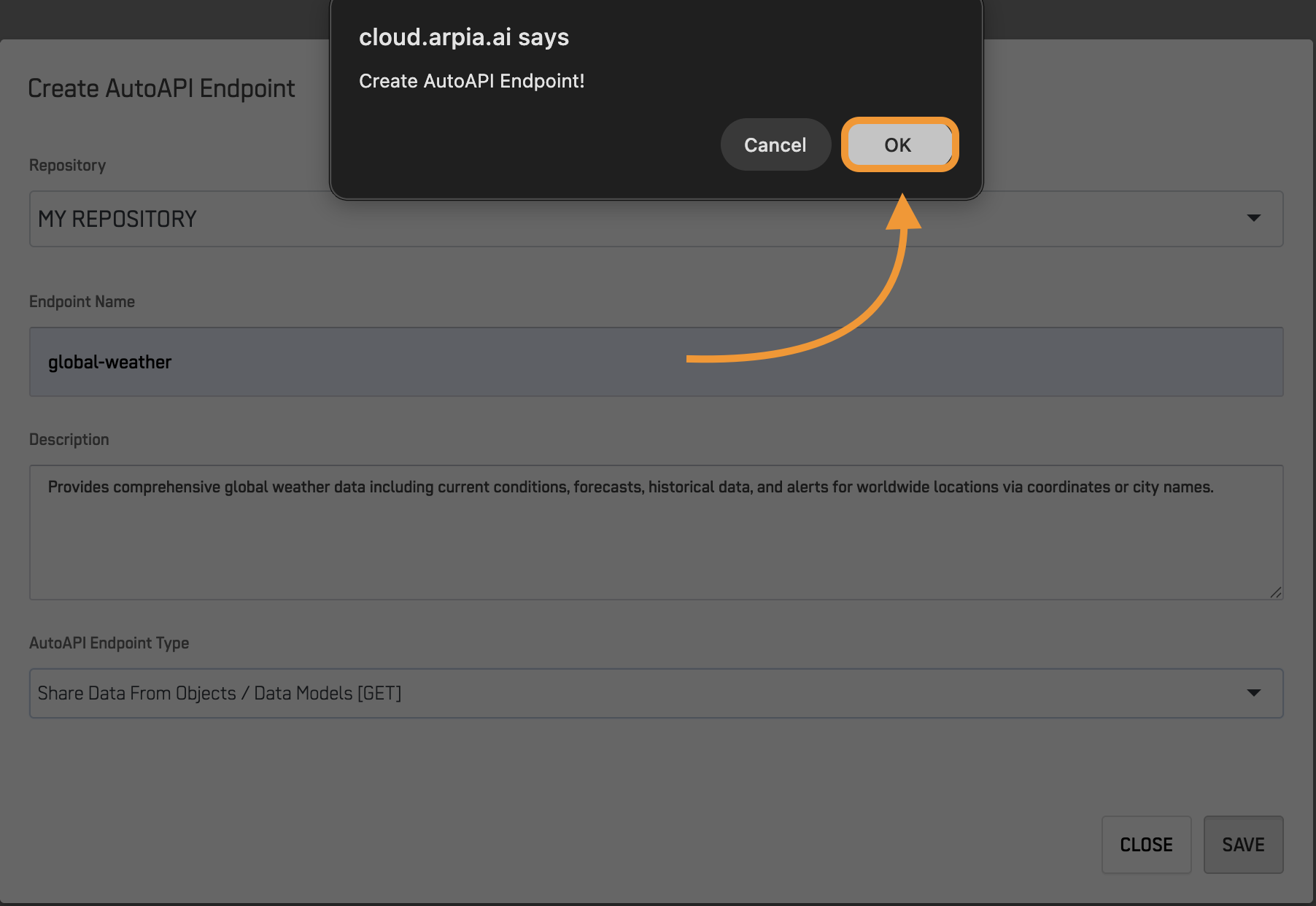
Step 4: Edit the AutoAPI settings
Select EDIT on your AutoAPI to access the settings.
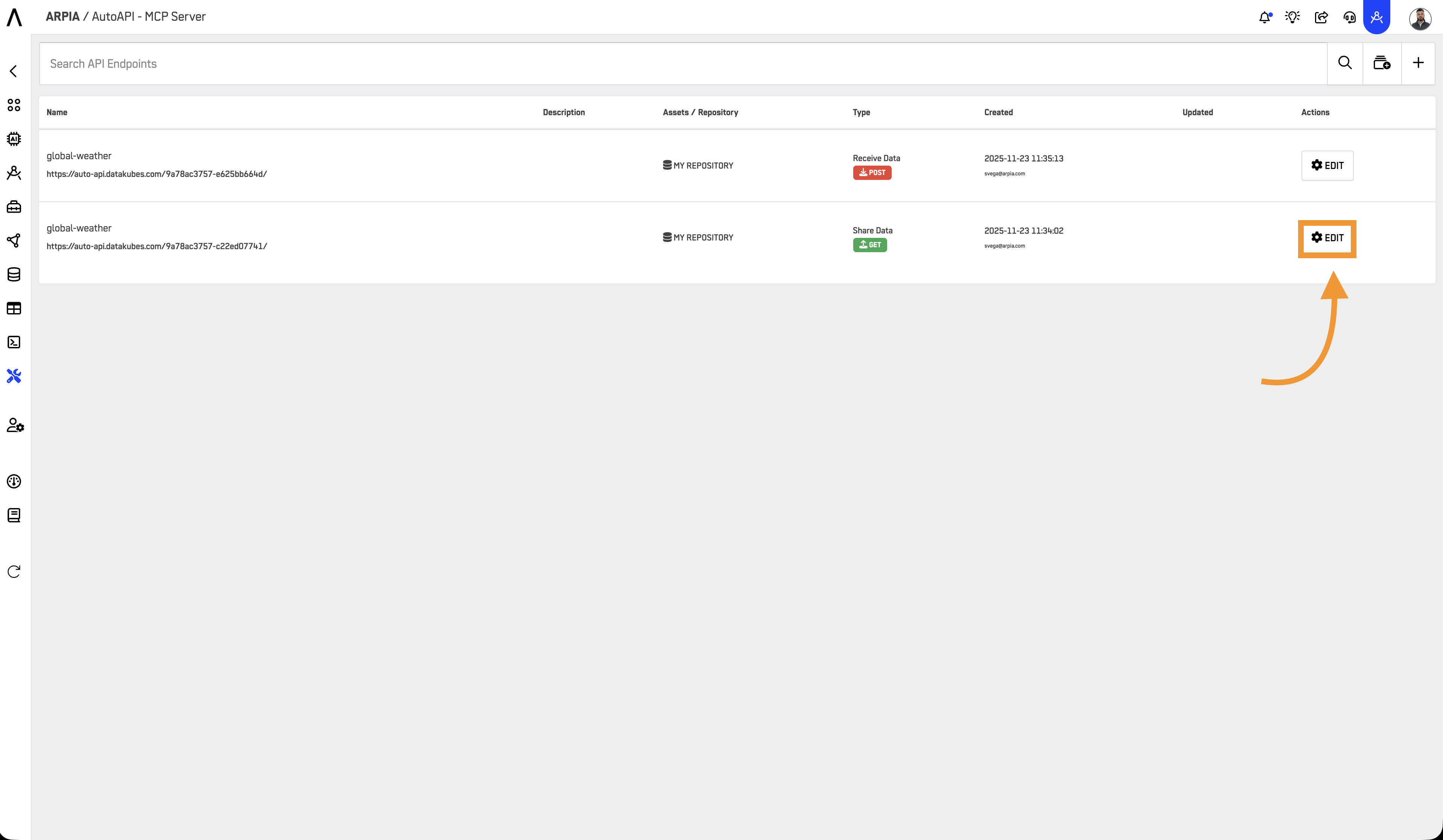
Step 5: GET AutoAPI
Navigate to the "Configuration" Tab to set up your GET AutoAPI.
Sub-step 5.1: Select Data Source
Choose the object you would like to retrieve data from. You have two options:
- Share Repository Object: Select a "Data Object" from your repository
- Share Kube Model: Select a "Node" from your Kubes model

This allows you to access either traditional table structures or cube-based data models depending on your needs.
Sub-step 5.2: Configure Columns
Once you've selected your data source:
- Review the available columns from your selected table or cube
- Select which specific columns you want to expose through your AutoAPI
- Consider data security and performance when choosing columns to share
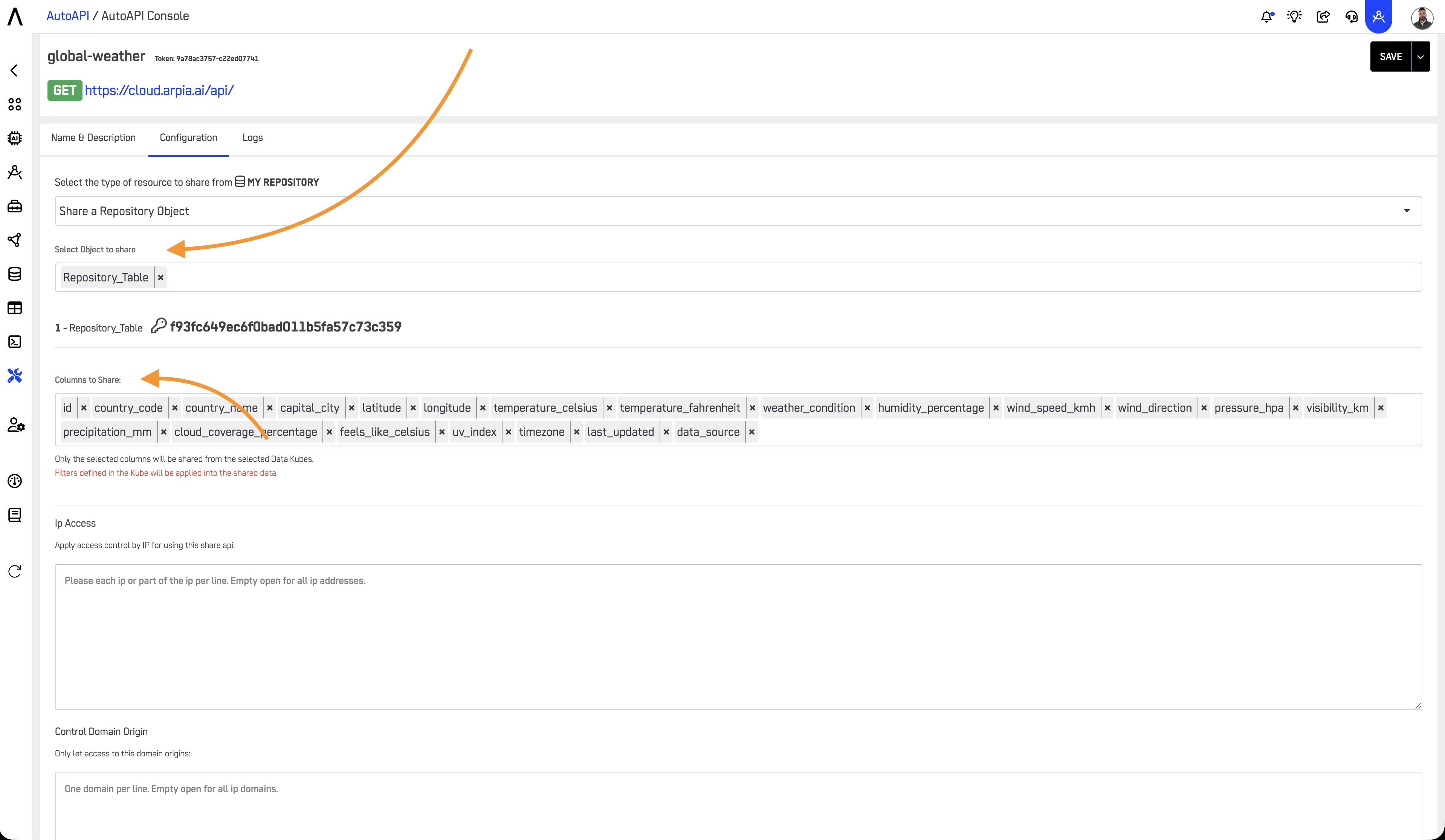
Sub-step 5.3: Save and Activate
After configuring your data source and columns:
- Review your selections to ensure they meet your requirements
- Click the save button to activate your AutoAPI
- Your API endpoint will be ready for use immediately after saving
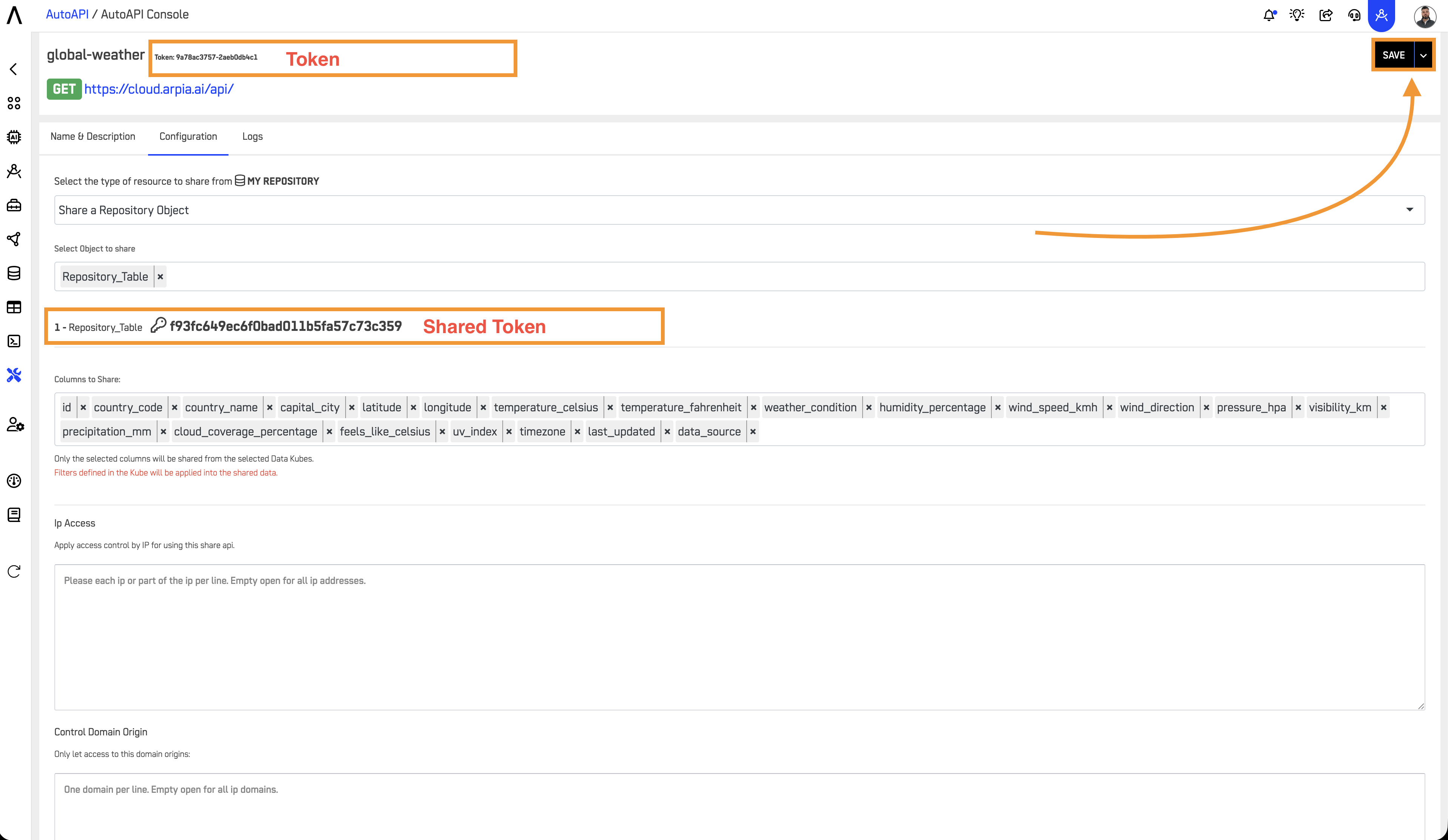
Sub-step 5.4: Test Your AutoAPI Endpoint
Once your AutoAPI is activated, you can test it using the following URL format:
https://cloud.arpia.ai/api/?token=PLACE_YOUR_TOKEN_HERE&shared_token=PLACE_YOUR_SHARED_TOKEN_HERE
Parameters:
token: ReplacePLACE_YOUR_TOKEN_HEREwith your actual API tokenshared_token: ReplacePLACE_YOUR_SHARED_TOKEN_HEREwith your actual shared token
Example:
If your tokens are:
- API Token:
abc123xyz - Shared Token:
def456uvw
Your complete URL would be:
https://cloud.arpia.ai/api/?token=abc123xyz&shared_token=def456uvw
Testing Method 1: Browser (For GET Requests)
- Copy your complete URL with your actual tokens
- Open a new browser tab
- Paste the URL in the address bar and press Enter
- View the response:
- If successful, you'll see JSON data returned
- If there's an error, check your tokens and endpoint configuration
Tip: Install a browser JSON viewer extension for better readability of the response.
Testing Method 2: Postman
-
Open Postman (or download from postman.com)
-
Create a new request:
- Click "New" → "HTTP Request"
- Select the appropriate method (GET, POST, PUT, etc.)
-
Configure the request:
- Enter the base URL:
https://cloud.arpia.ai/api/ - Go to the "Params" tab
- Add the following query parameters:
- Key:
token| Value:[your_api_token] - Key:
shared_token| Value:[your_shared_token]
- Key:
- Enter the base URL:
-
For POST/PUT requests (if applicable):
- Go to the "Body" tab
- Select "raw" and "JSON"
- Enter your request payload
-
Send the request:
- Click "Send"
- Review the response in the bottom panel
- Check the status code (200 = success)
-
Save for future use:
- Click "Save" to create a collection
- Name your request for easy access later
Testing Method 3: cURL (Command Line)
For developers comfortable with command line:
# GET request
curl "https://cloud.arpia.ai/api/?token=abc123xyz&shared_token=def456uvw"
# POST request with JSON payload
curl -X POST "https://cloud.arpia.ai/api/?token=abc123xyz&shared_token=def456uvw" \
-H "Content-Type: application/json" \
-d '{"key":"value"}'
Common Testing Issues and Solutions
| Issue | Solution |
|---|---|
| 401 Unauthorized | Check that both tokens are correct and properly formatted |
| 403 Forbidden | Verify your IP address or domain is allowed in security settings |
| 404 Not Found | Verify the endpoint path and that the AutoAPI is activated |
| Empty response | Ensure data source is configured and has accessible data |
| Connection timeout | Check network connectivity and firewall settings |
Security Configuration
Your AutoAPI includes built-in security controls that can be configured in the Edit settings:
1. IP Access Control
- Restrict API access to specific IP addresses or IP ranges
- Add one IP or IP range per line in the configuration
- Leave empty to allow access from all IP addresses
- Example entries:
192.168.1.100
10.0.0.0/24
203.0.113.45
2. Control Domain Origin
- Restrict API access to specific domain origins (CORS control)
- Add one domain per line in the configuration
- Leave empty to allow access from all domains
- Example entries:
https://app.example.com
https://dashboard.company.com
http://localhost:3000
Security Best Practices:
- Never share your tokens publicly or commit them to version control
- Use environment variables in applications for token management
- Configure IP restrictions for production APIs to known server addresses
- Set domain origin controls to prevent unauthorized cross-origin requests
- Use HTTPS for all API communications
- Monitor API access logs regularly for unusual activity
- Consider using different AutoAPI endpoints for development and production with appropriate security settings for each
Note: Remember that any changes to column selection or data source will require saving again to update your active AutoAPI configuration.
Step 6: Buckets in AutoAPI
Buckets are an integral part of the AutoAPI system, used to store and manage files, resources, or data payloads. You can:
- Integrate Buckets for file storage directly into your AutoAPI workflows.
- Use AutoAPI to retrieve data from or send data to Buckets via API calls.
- Manage Buckets resources using GET, PUT, and POST methods in the AutoAPI interface.
For more details on how Buckets are utilized, refer to the S3 Buckets API Documentation.
Updated 30 days ago
